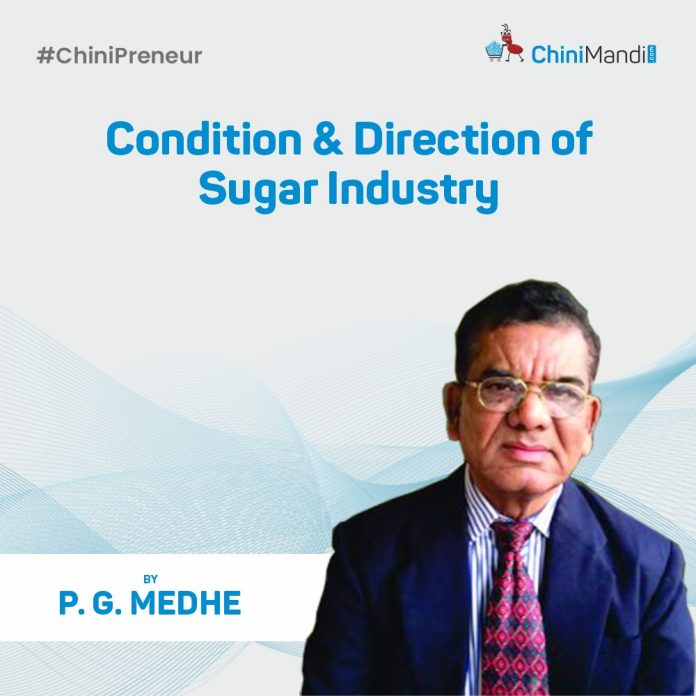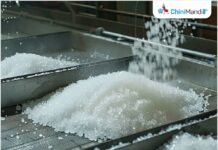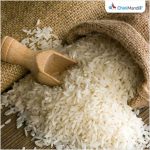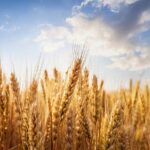The sugar industry stands as a cornerstone of our nation’s economy, deeply rooted in tradition yet poised for transformation. As we embark on a journey towards the future, we recognize the pivotal role the sugar industry plays in sustaining livelihoods, fostering economic growth, and contributing to our nation’s prosperity. With a steadfast commitment to innovation, sustainability, and inclusivity, we present this preamble to outline the overarching vision and guiding principles for the next decade.
Our vision for the sugar industry is one of resilience, competitiveness, and sustainability. Over the next ten years, we aspire to build a dynamic and modern sugar sector that not only meets domestic demand but also emerges as a key player in the global market. Through strategic planning, technological advancements, and stakeholder collaboration, we seek to unlock the full potential of the sugar industry, driving socio-economic development and enhancing the quality of life for all stakeholders.
“GUIDING PRINCIPLES “
2) WATER MANAGEMENT INITIATIVES:
Water management initiatives are crucial for the sustainability of the sugar industry due to its heavy reliance on water resources. Here are some key initiatives to consider when formulating a 10-year roadmap:
1) Water Recycling and Reuse: Implement systems to recycle and reuse water within the production process to minimize freshwater consumption and reduce wastewater discharge.
2) Efficient Irrigation Practices: Encourage the adoption of efficient irrigation techniques, such as drip irrigation, to optimize water usage in sugarcane cultivation.
3) Water Harvesting: Invest in water harvesting infrastructure to capture rainwater and replenish groundwater reserves, reducing dependence on surface water sources.
4) Crop Management Techniques: Promote practices like mulching and cover cropping to improve soil water retention and reduce evaporation, thereby conserving water in sugarcane fields.
5) Advanced Technologies: Embrace innovative technologies like precision agriculture and sensor-based irrigation systems to monitor soil moisture levels and optimize water application.
6) Community Engagement: Engage with local communities to raise awareness about water conservation and involve them in collaborative efforts to protect water resources shared by the sugar industry and surrounding areas.
7) Regulatory Compliance: Ensure compliance with water regulations and standards to minimize environmental impact and avoid fines or penalties associated with water pollution.
8) Investment in Research and Development: Allocate resources for research and development projects aimed at developing drought-resistant sugarcane varieties and water-efficient processing technologies.
9) Supply Chain Collaboration: Collaborate with suppliers and partners to implement water-saving measures throughout the supply chain, from sugarcane cultivation to processing and distribution.
10) Continuous Monitoring and Evaluation: Establish a system for ongoing monitoring and evaluation of water management initiatives to track progress, identify areas for improvement, and adjust strategies as needed to achieve long-term sustainability goals. By integrating these initiatives into a comprehensive 10-year roadmap, the sugar industry can enhance its water stewardship practices and ensure the continued viability and resilience of its operations in the face of water scarcity and environmental challenges.
3) DRIP IRRIGATION:
Drip irrigation plays a crucial role in sugar cane cultivation due to its ability to deliver water and nutrients directly to the roots of the plants in a controlled manner. Here’s a detailed note on the importance of drip irrigation for sugar cane crops:
1. Water Conservation: Drip irrigation systems minimize water wastage by delivering water directly to the root zone of sugar cane plants, reducing evaporation and runoff. This conservation of water is especially critical in regions facing water scarcity or drought conditions.
2. Efficient Nutrient Delivery: Along with water, drip irrigation facilitates the precise delivery of fertilizers and nutrients directly to the root zone. This ensures optimal nutrient uptake by sugar cane plants, leading to healthier growth and higher yields.
3. Enhanced Growth and Yield: By maintaining soil moisture levels and ensuring consistent access to water and nutrients, drip irrigation promotes vigorous growth and development of sugar cane plants. This results in increased cane yields and better quality produce.
4. Weed Control: Drip irrigation systems deliver water only to the desired plant root zones, minimizing moisture availability to weed seeds. This helps in suppressing weed growth, reducing competition for resources, and promoting healthier sugar cane crops.
5. Disease Management: Consistent soil moisture levels achieved through drip irrigation can help in managing certain soil-borne diseases that affect sugarcane crops. By reducing water stress and maintaining optimal growing conditions, drip irrigation contributes to disease prevention and control.
6. Labour and Energy Savings: Compared to traditional irrigation methods such as flood or furrow irrigation, drip irrigation requires less labor and energy for operation and maintenance. This can lead to cost savings and increased efficiency in sugar cane farming operations.
7. Environmental Sustainability: The precise application of water and nutrients offered by drip irrigation minimizes the risk of nutrient leaching and soil erosion, thereby promoting environmental sustainability in sugar cane cultivation. Additionally, by conserving water resources, drip irrigation contributes to the overall sustainability of agriculture in water-stressed regions.
In conclusion, drip irrigation is indispensable for sugar cane cultivation as it ensures efficient water and nutrient management, promotes healthier growth and higher yields, and contributes to environmental sustainability and resource conservation.
4) LAND PRODUCTIVITY DEVELOPMENT PROGRAM :
Developing a land productivity development program for sugar cane crop is crucial for the long-term sustainability of the sugar industry. It can include measures like soil health management, efficient irrigation techniques, crop rotation, and adopting modern agricultural practices to enhance yields while minimizing environmental impact. Such a program can be a key component of the broader 10-year roadmap for sugar industry sustainability, ensuring its viability for years to come.
5) CONSOLIDATED FARMING:
Consolidated farming for cane cultivation refers to the practice of consolidating smaller plots of land into larger, more efficient farms dedicated to sugarcane cultivation. Here’s a detailed note on its need:
1) Economies of Scale: Consolidated farming allows for larger-scale operations, which often lead to cost efficiencies. Larger farms can benefit from bulk purchasing of inputs like fertilizers and machinery, as well as streamlined management practices.
2) Increased Productivity: Larger, consolidated farms can adopt modern farming techniques and technology more easily. This can lead to increased productivity through mechanization, precision agriculture, and better irrigation methods.
3) Land Utilization: By consolidating smaller plots into larger farms, land can be utilized more effectively. This reduces fragmentation and allows for better planning of crop rotation, soil management, and infrastructure development.
4) Improved Quality Control: Consolidated farming enables better quality control throughout the production process. With standardized practices and centralized management, farmers can ensure consistent quality of sugarcane, leading to higher prices in the market.
5) Access to Markets: Larger farms often have better access to markets and distribution networks. This can result in improved market opportunities and higher profitability for farmers.
6) Environmental Sustainability: Consolidated farming facilitates the implementation of sustainable agricultural practices. By investing in technologies like drip irrigation, soil conservation measures, and renewable energy, large-scale farms can minimize environmental impact and promote long-term sustainability.
7) Risk Management: Larger farms are better equipped to handle risks such as crop failure, price fluctuations, and adverse weather conditions. Diversification of crops within consolidated farms can further mitigate risks and stabilize farm incomes.
8) Support for Rural Development: Consolidated farming can contribute to rural development by creating employment opportunities, supporting local economies, and providing infrastructure development in rural areas.
In conclusion, consolidated farming for cane cultivation offers numerous benefits including economies of scale, increased productivity, improved quality control, access to markets, environmental sustainability, risk management, and support for rural development. Adopting this approach can enhance the overall efficiency and sustainability of sugarcane cultivation.
6) RESEARCH AND DEVELOPMENT PRACTICES :
Research and development (R&D) play a crucial role in enhancing the practices of the sugar industry for long-term sustainability. Here’s how:
Innovation: R&D fosters innovation, leading to the development of new technologies and processes that can improve efficiency, reduce waste, and enhance product quality in the sugar industry.
Sustainability: R&D allows for the exploration of sustainable practices such as water conservation, energy efficiency, and waste management, which are essential for the long-term viability of the sugar industry.
Product Diversification: Through R&D, the sugar industry can explore opportunities for product diversification, such as producing biofuels, bioplastics, or other value-added products from sugarcane by-products, thereby reducing dependency on traditional sugar markets.
1) Crop Improvement: R&D in agronomy and genetics can lead to the development of improved sugarcane varieties that are resistant to pests and diseases, drought-tolerant, and have higher yields, thereby increasing productivity and reducing environmental impact.
2) Market Competitiveness: Continuous R&D efforts enable sugar producers to stay competitive in the global market by adapting to changing consumer preferences, complying with regulations, and adopting best practices in sustainability.
3) Risk Mitigation: R&D helps the sugar industry anticipate and mitigate risks such as climate change, fluctuating market prices, and regulatory changes by developing resilient and adaptable production systems.
4) Resource Efficiency : R&D initiatives focus on optimizing resource utilization, including land, water, and energy, to minimize environmental impact and maximize economic returns for sugar producers.
5) Collaboration and Knowledge Sharing: Collaborative R&D projects facilitate knowledge sharing and technology transfer among industry stakeholders, research institutions, and government agencies, driving collective efforts towards sustainability goals.
6) Consumer Demand: R&D helps the sugar industry meet evolving consumer demands for healthier, ethically sourced, and environmentally friendly products by developing innovative solutions and alternative sweeteners.
7) Long-Term Planning: By investing in R&D, the sugar industry can develop a strategic roadmap for sustainability, outlining key priorities, milestones, and investments over the next decade to ensure continued growth, resilience, and environmental stewardship.
7) ENVIRONMENTAL CONSERVATION MEASURES:
Environmental conservation in the sugar industry is crucial due to its significant impact on water, soil, and air quality. Here’s a detailed note on conservation measures:
1) Water Management: Implementing water recycling systems to minimize freshwater usage and reduce wastewater discharge. Investing in drip irrigation and efficient water application techniques in sugarcane cultivation to minimize water wastage.
2) Energy Efficiency: Adopting energy-efficient technologies in sugar processing, such as using biomass or bagasse (sugarcane residue) to generate electricity. Implementing cogeneration systems to produce both electricity and heat from bagasse, reducing reliance on fossil fuels.
3) Waste Management: Establishing waste treatment plants to process effluents and solid wastes, including bagasse and molasses, to produce biogas, compost, or biofuels.Encouraging the utilization of by-products such as bagasse for paper production or as a renewable energy source.
4) Biodiversity Conservation: Protecting natural habitats within and around sugar plantations to preserve biodiversity and ecosystem services. Promoting agroforestry practices to diversify crops and provide habitat for wildlife.
5) Reducing Chemical Inputs: Implementing integrated pest management strategies to minimize the use of synthetic pesticides and fertilizers. Promoting organic farming practices and biological pest control methods to reduce chemical pollution and soil degradation.
6) Air Quality Management: Installing emission control technologies in sugar mills to reduce air pollutants released during sugarcane processing. Promoting cleaner transportation methods for sugarcane delivery and product distribution to minimize air pollution.
7) Community Engagement: Engaging with local communities to address environmental concerns and involve them in conservation efforts. Supporting initiatives for sustainable livelihoods and environmental education programs to raise awareness about the importance of conservation.
8) Compliance and Certification: Adhering to environmental regulations and obtaining certifications such as ISO 14001 to demonstrate commitment to sustainable practices. Regular monitoring and reporting of environmental performance to identify areas for improvement and ensure compliance with standards. By implementing these measures, the sugar industry can mitigate its environmental impact, promote sustainability, and contribute to the conservation of natural resources for future generations.
8) TECHNOLOGICAL DEVELOPMENT :
The sugar industry has seen significant technological advancements aimed at enhancing efficiency, productivity, and sustainability. Here’s a detailed overview:
1) Automation and Robotics: Automation technologies like robotic harvesters and automated sorting systems have revolutionized sugarcane harvesting and processing, reducing labor costs and increasing efficiency.
2)!Precision Agriculture: Technologies such as drones, GPS, and sensors are used for precise monitoring of sugarcane fields. This helps in optimized resource management, such as water and fertilizer usage, leading to higher yields and lower environmental impact.
3) Biotechnology: Genetic engineering and biotechnology have played a crucial role in developing high-yielding and disease-resistant sugarcane varieties. This ensures better crop resilience and higher productivity.
4) Energy Efficiency: Advances in energy-efficient equipment and processes, such as improved boilers and cogeneration systems, enable sugar mills to produce electricity from bagasse (sugarcane residue), reducing dependency on external energy sources.
5) Data Analytics and IoT: Integration of IoT devices and data analytics platforms allows real-time monitoring of various parameters in sugar production, optimizing processes, and predicting equipment failures before they occur, thereby minimizing downtime.
6) Waste Management: Innovations in waste management technologies, such as anaerobic digestion and composting, help in converting sugarcane byproducts into value-added products like biogas, organic fertilizers, and animal feed.
7) Water Conservation: Water scarcity is a concern in sugarcane cultivation. Technological solutions like drip irrigation, moisture sensors, and water recycling systems help in efficient water usage, conserving this vital resource.
8) Traceability and Quality Control: Blockchain technology is being explored to establish transparent supply chains, enabling consumers to trace the origin of sugar products and ensuring quality control throughout the production process.
9) Sustainability Initiatives: The industry is increasingly adopting sustainable practices, such as organic farming, biodiversity conservation, and reducing greenhouse gas emissions, supported by technological innovations and regulatory frameworks.
10) Market Intelligence and Forecasting: Advanced analytics and machine learning algorithms analyze market trends, weather patterns, and consumer preferences, helping sugar producers make informed decisions regarding production, pricing, and distribution. Overall, technological advancements continue to drive innovation and transformation in the sugar industry, addressing challenges while improving sustainability and competitiveness.
9) MARKET DIVERSIFICATION AND EXPORT PROMOTIONS:
Market diversification and export promotion are crucial strategies for the sugar industries 10-year roadmap for several reasons….
1) Reduced Dependency:
Relying solely on domestic consumption can be risky due to fluctuating demand and prices. Diversifying into international markets reduces dependency on a single market, mitigating risks associated with local economic conditions. Increased Revenue Streams: Exporting allows sugar companies to tap into new revenue streams by accessing markets with higher demand or better prices. This can contribute to increased profitability and stability for the industry.
2) Economic Growth:
Export promotion can stimulate economic growth by generating foreign exchange earnings, creating employment opportunities, and fostering technological advancements within the industry.
4) Competitive Advantage:
Diversifying into new markets allows sugar companies to gain a competitive advantage by offering their products to consumers who may have different preferences, tastes, and purchasing behaviors.
5) Risk Management:
Market diversification spreads risks across multiple markets, reducing vulnerability to unforeseen events such as natural disasters, political instability, or changes in regulations in a single market.
6) Long-Term Sustainability:
By expanding into international markets, sugar industries can ensure long-term sustainability by accessing new markets for growth and maintaining competitiveness in the global market.
7) Innovation and Adaptation:
Export promotion often requires companies to innovate and adapt their products to meet the specific needs and preferences of international consumers, driving technological advancements and product improvements within the industry.
8) Global Trends:
Diversifying into export markets allows sugar industries to capitalize on global trends such as increasing demand for organic or sustainably sourced products, thereby staying ahead of changing consumer preferences. Overall, market diversification and export promotion are essential components of the sugar industry’s 10-year roadmap, providing opportunities for growth, stability, and long-term sustainability in an increasingly interconnected global economy.
10) TIMELY FIX OF FRP FOR SUGARCANE COUPLED WITH MSP
Timely fixing of Fair and Remunerative Price (FRP) for sugar cane is crucial for providing stability to farmers and ensuring their livelihood. Coupled with Minimum Support Price (MSP) for sugar, it forms the backbone of a sustainable roadmap for the sugar industry over the next decade. This ensures fair compensation for farmers and encourages them to continue cultivating sugar cane, thus maintaining the supply chain and stability in the industry.
11) POLICY SUPPORT AND REGULATORY FRAMEWORK:
Policy support and a robust regulatory framework are crucial for ensuring the sustainability of the sugar industry over a 10-year roadmap. These measures can provide stability, incentivize sustainable practices, and address challenges such as environmental impact, market fluctuations, and social concerns. Policies can encourage investment in research and development for innovative, sustainable practices, while regulations can ensure compliance with environmental standards, fair labor practices, and market transparency. Additionally, policies that promote diversification, value-added products, and market access can help the sugar industry adapt to changing consumer preferences and global market dynamics.
12) LABOUR WELFARE AND SKILL DEVELOPMENT PROGRAMS:
In the roadmap for sustainability in the sugar industry, labor welfare and skill development are critical aspects for several reasons:
1) Human Capital Investment: Skilled labor is essential for the efficient and sustainable operation of sugar industries. Investing in labor welfare and skill development ensures a competent workforce capable of adapting to technological advancements and industry changes.
2) Productivity Enhancement: Well-trained and motivated employees are more productive, leading to higher yields and improved efficiency in sugar production processes.
3) Employee Retention: Providing welfare measures such as health benefits, safety protocols, and fair wages fosters loyalty among workers, reducing turnover rates and associated costs of recruitment and training.
4) Community Relations: Sugar industries often operate in rural areas, and their activities significantly impact local communities. Ensuring labor welfare enhances the industry’s reputation and fosters positive relationships with stakeholders.
5) Compliance and Regulations: Many countries have regulations regarding labor welfare and workplace safety. Adhering to these regulations not only avoids legal issues but also demonstrates the industry’s commitment to ethical practices. Challenges in labor welfare and skill development within the sugar industry roadmap may include:
6) Resource Constraints: Limited financial resources may hinder investment in training programs and welfare measures for employees.
7) Technological Advancements: Rapid technological changes require continuous upskilling of the workforce, which can be challenging to implement and sustain.
8) Seasonal Nature of Work: Sugar production is often seasonal, leading to fluctuations in employment demand. Providing consistent training and welfare benefits year-round can be difficult.
9) Labor Relations: Disputes between labor unions and management can disrupt operations and affect productivity. Effective communication and negotiation strategies are essential to maintain harmonious labor relations. Addressing these challenges requires collaboration between industry stakeholders, government bodies, and local communities to develop sustainable solutions that prioritize both the well-being of workers and the long-term viability of the sugar industry.j
13) ENERGY EFFICIENCY AND RENEWABLE ENERGY INTEGRATION :
Energy efficiency and renewable energy integration play pivotal roles in crafting a sustainable roadmap for the sugar industry over the next decade. Here’s why:
1) Cost Savings: Energy efficiency measures can significantly reduce operational costs for sugar industries by minimizing energy consumption. Integrating renewable energy sources further cuts down on energy expenses in the long term.
2) Environmental Impact: By prioritizing energy efficiency and renewable energy, sugar industries can decrease their carbon footprint and mitigate environmental damage caused by traditional energy sources.
3) Resource Conservation: Efficient energy usage and renewable energy adoption contribute to conserving natural resources, such as fossil fuels and water, which are crucial for sugar production.
4) Resilience and Reliability: Diversifying energy sources through renewable energy integration enhances the resilience and reliability of energy supply for sugar production, reducing vulnerability to fluctuations in fossil fuel prices and supply chain disruptions.
5) Regulatory Compliance: Many regions have strict environmental regulations regarding energy consumption and emissions. By improving energy efficiency and transitioning to renewable energy, sugar industries can ensure compliance with these regulations, avoiding fines and reputational damage.
6) Long-Term Viability: Embracing energy efficiency and renewable energy aligns with global sustainability goals and consumer preferences for environmentally responsible products. This positions sugar industries for long-term viability and competitiveness in the market. Incorporating energy efficiency measures and renewable energy integration into the sustainability roadmap for the sugar industry is not just beneficial for the environment but also essential for its economic prosperity and social responsibility.
14) CROP DIVERSIFICATION STRATEGIES:
Crop diversification strategies are crucial for the sustainability of the sugar industry over the next decade. Here’s a roadmap:
1) Research and Development: Invest in R&D for alternative crops that can be grown alongside or instead of sugar cane, such as legumes, fruits, or vegetables.
2) Soil Health Management: Implement practices like crop rotation and cover cropping to improve soil health and fertility, reducing the reliance on chemical fertilizers.
3) Water Management: Adopt efficient irrigation techniques and water conservation practices to mitigate the impact of water scarcity on sugar cultivation.
4) Market Diversification: Explore new markets and value-added products derived from sugar cane, such as biofuels, bioplastics, or specialty sugars, to reduce dependency on traditional sugar markets.
5) Climate Resilience: Develop resilient crop varieties and farming practices that can withstand climate change impacts, such as drought or extreme weather events.
6) Technology Adoption: Embrace precision agriculture technologies, IoT sensors, and data analytics to optimize resource use and increase productivity while minimizing environmental impact.
7) Policy Support: Advocate for policies that incentivize crop diversification and sustainable agricultural practices, such as subsidies for alternative crops or carbon credits for environmental stewardship.
8) Education and Training: Provide farmers with the necessary knowledge and skills to successfully implement crop diversification strategies through training programs and extension services.
9) Collaboration and Partnerships: Foster partnerships between government, industry, academia, and farmers to coordinate efforts and share best practices for sustainable sugar cultivation.
10) Monitoring and Evaluation: Establish monitoring systems to track the progress of crop diversification initiatives and evaluate their impact on the sustainability of the sugar industry over the next decade.
15) COLLABORATION WITH STAKEHOLDERS FOR SUSTAINABLE PRACTICES :
Collaborating with stakeholders is crucial for developing a sustainable roadmap for the sugar industry. Stakeholders, including farmers, government agencies, environmental groups, and consumers, offer diverse perspectives and expertise that can ensure the roadmap addresses key challenges such as environmental impact, social responsibility, and economic viability. Their involvement fosters transparency, builds trust, and increases the likelihood of successful implementation by aligning interests and priorities.
By engaging stakeholders throughout the process, the roadmap can incorporate a holistic approach that balances economic growth with environmental and social responsibility, leading to a more resilient and sustainable sugar industry for the long term.
CONCLUSION :
In conclusion, the 10-year roadmap for the sustainability of the sugar industry through crop diversification is a multifaceted approach aimed at mitigating risks, enhancing resilience, and fostering innovation. By embracing diverse crops, improving agricultural practices, leveraging technology, and fostering collaboration, the industry can adapt to evolving challenges while seizing new opportunities for growth and sustainability. With concerted efforts and strategic investments, we can ensure a vibrant and resilient sugar industry that thrives in the face of changing climates, markets, and societal expectations, while also contributing to environmental stewardship and economic prosperity for all stakeholders involved.












